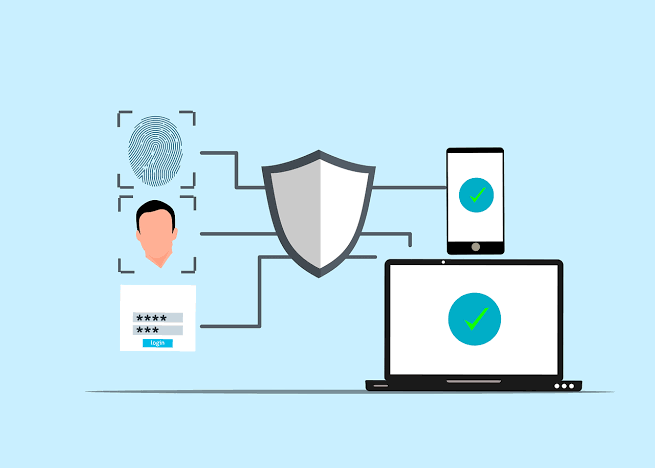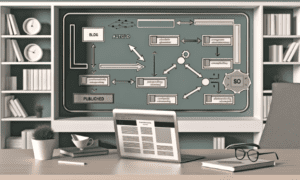The convergence of Information Technology (IT) and Operational Technology (OT) is reshaping industrial operations worldwide. Once isolated and air-gapped, manufacturing plants, power facilities, and critical infrastructure are now interconnected for greater efficiency and data-driven decision-making. However, this digital transformation introduces new cybersecurity risks that traditional perimeter-based security models fail to mitigate.
Frontline workers in OT environments—from manufacturing floor technicians to power plant operators—face unique security challenges. They need fast, reliable access to critical systems, often via shared devices and workstations.
Unfortunately, traditional IT authentication methods, built for office settings, are ill-suited for these operational realities where workers wear gloves, operate in harsh conditions, and require seamless transitions between tasks without risking security breaches.
In this blog, we explore how Zero Trust Authentication offers a robust security solution designed specifically for frontline workers in OT environments.
The Limitations of Traditional Security in OT Environments
Traditional OT environments were built on a trust-based model: if you were inside the facility, you were granted access. This “castle and moat” approach worked well when OT systems operated as isolated, air-gapped islands. But with today’s smart factories, connected power grids, and digitized supply chains, IT and OT integration is essential.
While this integration unlocks benefits such as real-time analytics, predictive maintenance, and enhanced operational visibility, it also exposes critical vulnerabilities:
- Shared passwords widely used among shifts to access essential systems
- Legacy equipment lacking in modern authentication features, forcing risky trade-offs
- Emergency access procedures that bypass security, creating backdoors
- Difficulty ensuring audit compliance without individual user accountability
These realities leave OT environments dangerously exposed to cyber threats.
The human element compounds these challenges. Unlike knowledge workers with dedicated devices and predictable work patterns, frontline employees operate in dynamic, physically demanding environments. They might be wearing protective gear, working in extreme temperatures, or responding to urgent safety situations where every second counts.
Zero Trust Security Principles in Operational Technology Environments
Zero Trust security represents a fundamental shift in how organizations safeguard interconnected IT and OT systems. At its core, Zero Trust operates on three critical principles:
- Never trust, always verify: Every access request is considered potentially malicious, requiring strict identity verification.
- Least privilege access: Users receive only the essential permissions needed for their specific roles, minimizing attack surfaces.
- Continuous monitoring: Security protocols extend beyond initial authentication with ongoing risk assessment and behavioral analysis.
However, applying Zero Trust principles in OT environments presents unique challenges that differ significantly from traditional IT deployments:
| Aspect | Traditional IT Zero Trust | OT Zero Trust |
| Primary Focus | Protect data and applications | Safeguard physical safety and operational continuity |
| Device Model | Assigned, personal devices | Shared devices and workstations prevalent |
| Security Control Approach | Network-centric controls | Asset-centric and operational workflow-focused |
| Authentication Experience | Some friction accepted during login | Zero tolerance for delays or disruptions |
Bridging this divide requires tailored authentication strategies that ensure uncompromising security without hindering frontline worker productivity in mission-critical OT settings.
Authentication Challenges for Frontline Workers in OT Environments
Walk through any manufacturing facility, hospital, or distribution center, and you’ll witness the authentication challenges firsthand. These challenges make secure access control complex yet critical to operational safety and efficiency.
1. The Glove Problem
Try typing a complex password while wearing thick safety gloves, or using a fingerprint scanner with oil-stained fingers. These everyday realities make standard authentication methods impractical or impossible.
2. The Shared Device Reality
Unlike office workers with assigned laptops, frontline employees frequently share terminals, tablets, and specialized equipment. A single workstation might see dozens of different users throughout a single shift.
3. The Emergency Access Imperative
When a safety alarm sounds or equipment malfunctions, workers need immediate system access. Security measures that add even a few seconds of delay can have serious safety and financial consequences.
4. The Multi-System Challenge
A typical frontline worker might access a dozen different systems during their shift: inventory management, quality control, maintenance logs, safety reporting, and specialized industrial applications. Each with different authentication requirements and user interfaces.
These challenges explain why many organizations resort to shared passwords and simplified security—it’s often the only way to maintain operational efficiency with existing tools.
Designing Zero Trust Authentication Solutions for OT Frontline Workers
Effective zero trust authentication for frontline workers requires a fundamental shift in thinking. Instead of forcing industrial environments to adapt to IT-centric solutions, we need authentication designed specifically for operational realities.
1. Biometric Authentication: Beyond Fingerprints
Modern biometric solutions extend far beyond traditional fingerprint scanners. Advanced facial recognition systems can identify workers even when wearing safety equipment like hard hats, protective eyewear, or respirators. These systems adapt to varying lighting conditions—from bright factory floors to dimly lit control rooms.
The key advantage? Hands-free operation. Workers can authenticate while wearing gloves, carrying tools, or focusing on safety-critical tasks. The authentication happens in milliseconds, creating no operational friction.
2. Physical Credentials: The Badge Revolution
Employee badges represent untapped authentication potential. Modern RFID and NFC-enabled badges can provide strong authentication through simple tap gestures. Workers can authenticate to any system by tapping their existing employee badge—no additional hardware, training, or behavior change required.
This approach leverages existing infrastructure investments while providing cryptographically strong authentication. The physical possession requirement adds an additional security layer that’s naturally intuitive to frontline workers.
3. Continuous Presence Detection
Traditional authentication assumes a single login event followed by unlimited access. Zero trust requires continuous verification throughout the entire work session.
Presence detection technology automatically locks workstations when workers step away, preventing unauthorized access without requiring manual logouts. When they return, seamless reauthentication occurs without interrupting their workflow.
This approach is particularly powerful in shared device environments, where multiple workers might access the same terminal throughout a shift.
4. Integration with Existing OT Infrastructure
Effective Zero Trust authentication must integrate with identity management systems like Okta, Azure AD, or Ping Identity to centralize user provisioning and policy management. SCIM protocols facilitate automated user lifecycle management, ensuring access reflects current roles.
Legacy OT systems often lack support for modern authentication standards. To extend Zero Trust without costly equipment overhauls, organizations can deploy authentication proxy solutions that act as secure intermediaries, enabling modern identity controls for legacy applications.
Furthermore, integration between digital authentication and physical access control systems (PACS) unifies identity management across physical and cyber domains, an approach pioneered by companies like OLOID, a passwordless authentication platform, have demonstrated how such integration can enhance operational security while reducing administrative overhead.
Overcoming Zero Trust Implementation Barriers in OT Environments
Implementing Zero Trust Authentication in operational technology (OT) environments is a complex but essential journey. Organizations face unique technical, operational, and cultural barriers that must be addressed to realize the full security benefits without disrupting critical industrial processes.
1. The Legacy System Challenge
Many OT systems rely on decades-old programmable logic controllers (PLCs) and legacy equipment that lack native support for modern authentication and segmentation. Completely replacing these systems is often impractical due to operational downtime and cost. A pragmatic approach uses proxy and overlay technologies to extend Zero Trust principles without requiring wholesale infrastructure replacement.
2. Ensuring High Availability and Operational Continuity
OT environments prioritize availability as the highest security principle—downtime can cause physical damage, safety incidents, or financial losses. Implementing Zero Trust solutions must guarantee near-zero disruption through redundant authentication methods, failover mechanisms, and emergency access protocols tailored for industrial use.
3. Protocol Limitations
Industrial protocols such as Modbus and PROFINET often lack built-in authentication and encryption features required for Zero Trust. Introducing security gateways or proxies can mitigate this but may add latency or new failure points. Careful architectural planning is essential to balance performance with security.
4. Visibility and Asset Management Difficulties
Effective Zero Trust begins with knowing every device, user, and connection on the network. OT networks frequently feature shadow IT, undocumented devices, and legacy communication channels, complicating asset inventories and segmentation strategies. Addressing visibility gaps is a critical first step toward successful Zero Trust adoption.
5. Skills and Cultural Gaps
Implementing Zero Trust in OT demands cross-functional expertise combining cybersecurity and operational technology knowledge. Cultural barriers between IT and OT teams, differing skillsets, and resistance to change can slow progress. Organizations benefit from training programs that bridge these silos and promote a unified security mindset.
The Path Forward
The shift from perimeter-based security to zero trust authentication represents more than a technology upgrade, it’s a fundamental reimagining of how security can enhance rather than impede operational excellence.
For frontline workers in OT environments, this transformation requires authentication solutions that acknowledge operational realities while providing uncompromising security. The key lies in designing systems that feel natural to workers while providing comprehensive protection for critical assets.
Success factors include:
- User-centric design that prioritizes operational workflow
- Seamless integration with existing infrastructure and processes
- Comprehensive training that emphasizes benefits alongside requirements
- Continuous improvement based on user feedback and operational metrics
Organizations that embrace this approach will discover that zero trust authentication doesn’t just improve security—it creates operational advantages that justify the investment through improved efficiency, compliance, and worker satisfaction.
By implementing secure authentication methods specifically designed for operational environments, organizations can build security architectures that protect critical infrastructure while empowering frontline workers to operate effectively in an increasingly connected industrial landscape.
The future belongs to organizations that recognize security and operational excellence as complementary rather than competing objectives. Zero trust authentication for frontline workers is about creating the foundation for industrial operations that are both more secure and more efficient than ever before.



































